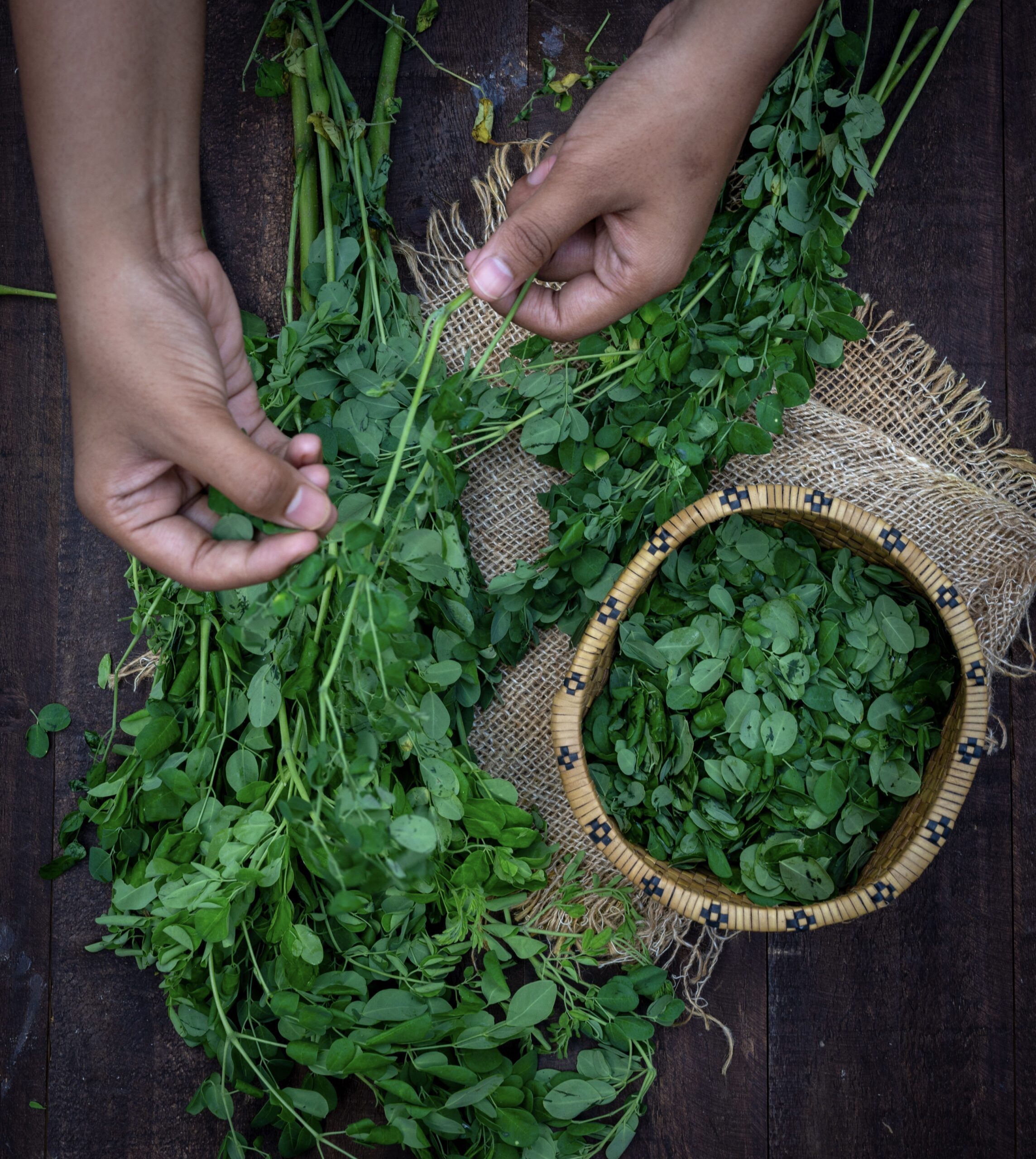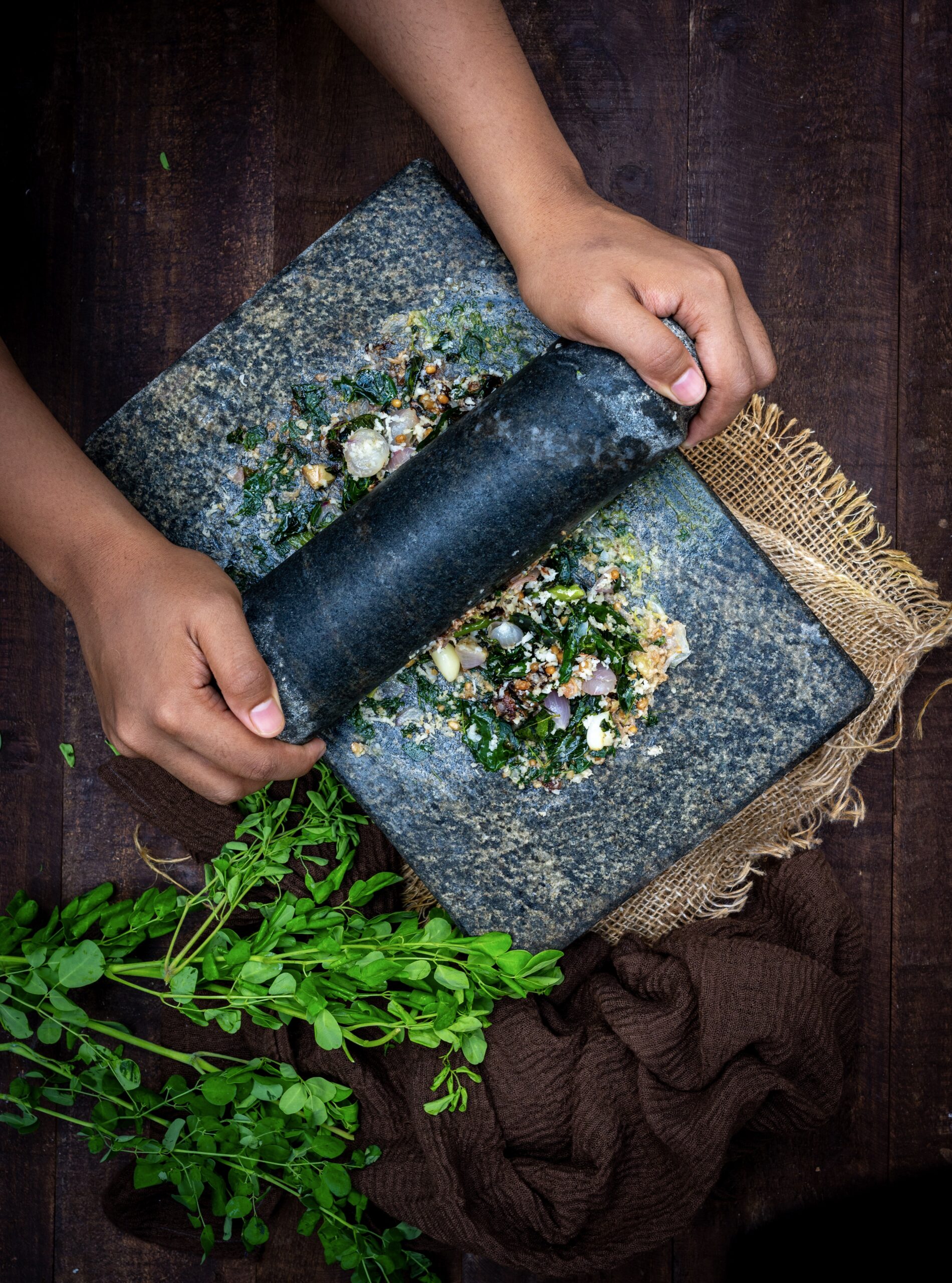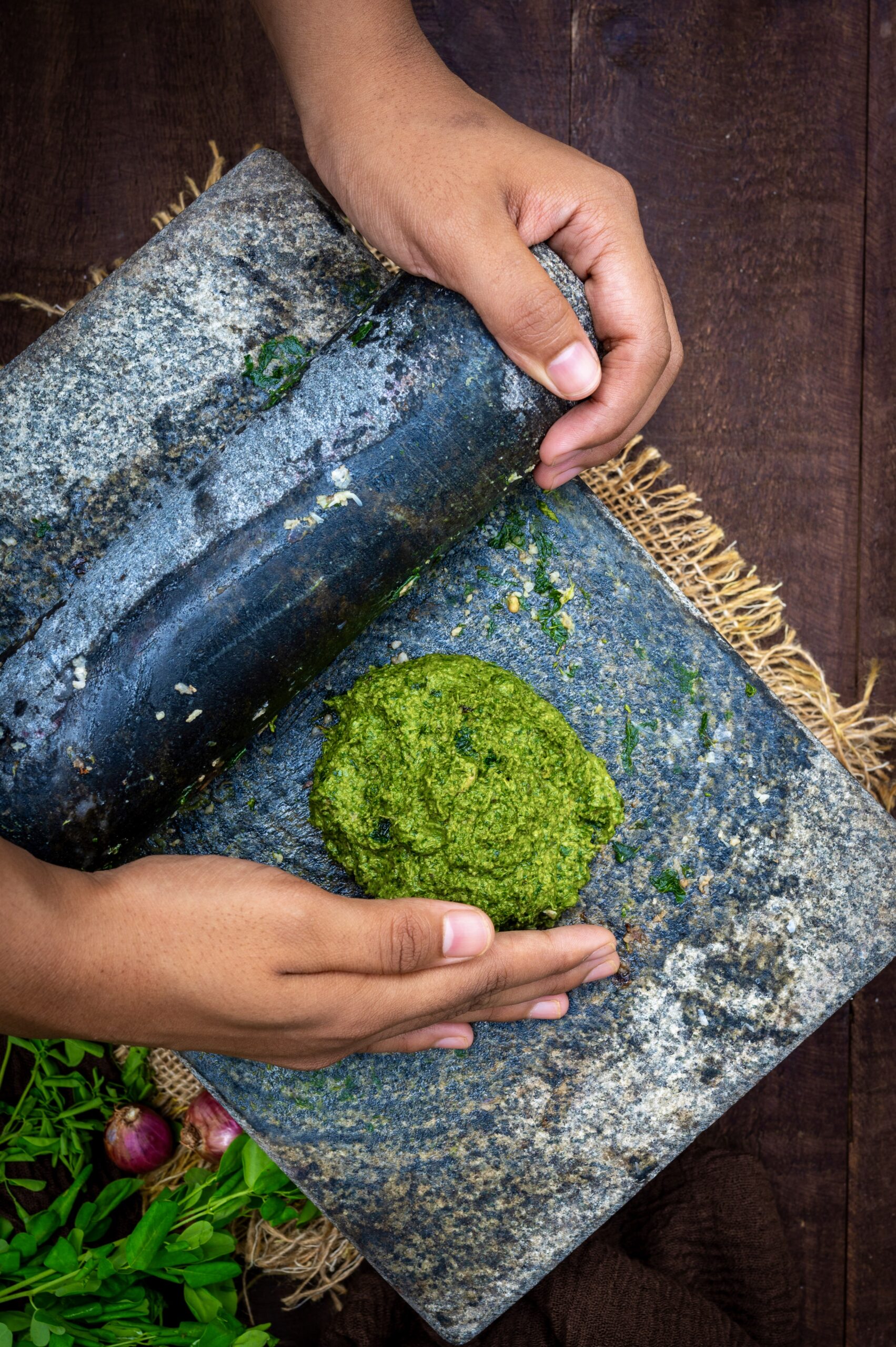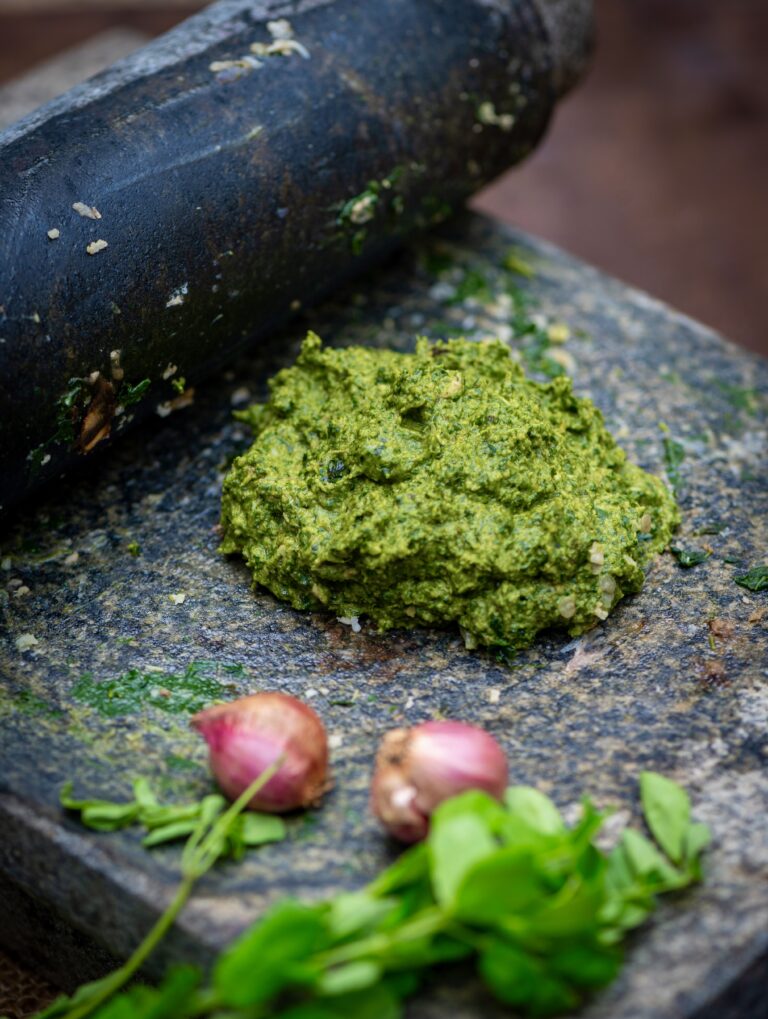Moringa leaves have made some appearances on my blog in the past, for instance in this omelette, as well as a suggested sprinkling across numerous other dishes. Moringa leaves are a very versatile green commonly used in South Indian cuisine, which happen to be considered a superfood. You may also know them as the leaves of the drumstick tree. Today, I want to share the recipe for moringa chutney, a tasty way to make use of this highly nutritious ingredient.
Moringa powder is also easy to make at home, if you have access to the trees. Just dry the leaves in the sun for five or six hours, powder and store. Remember to only use the leaves, and discard the stem. You can use it liberally across all kinds of dishes, to boost their antioxidant, mineral, amino acid and vitamin content.

Coming back to the chutney: I wanted to make it in a more traditional way. You may recall from my previous post, on roasted tomato soup, that I was nostalgic for the food mill method my mother would use. So this time, I decided to use the ammi-kallu, or grinding stone, to prepare this chutney. I do believe that it has come out extra flavourful because of the hand-ground effect. You can of course still get a delicious chutney with a modern blender.
I know it’s unfair to compare this moringa chutney to a pesto, but that’s what comes to mind for me. Like a pesto, it can be used in lots of different ways. You can have it as a dip with idli, mix it with a dollop of ghee onto rice, or even spread it on toast. The jar I made when I did the photoshoot for this recipe was wiped clean in two days, as my family found so many uses for it. It’s not a runny kind of chutney, which lets you get creative in terms of how you can use it.
Speaking of creativity, I was even thinking of bottling some and gifting it for Diwali, as a unique and surprising alternative to the usual Indian sweets. Perhaps that’s something you may want to do too, this festive season. I hope you’ll enjoy making and sharing this lovely moringa chutney!

Moringa Chutney
(Yield: One bowl)
1 tablespoon oil
¼ teaspoon asafoetida
4-6 shallots
1 teaspoon urad dal
3 cloves garlic
1 inch piece of ginger
6-8 curry leaves
2 slit green chilies
2 marble-sized balls of tamarind
1½ cups moringa leaves
½ cup shredded coconut
Add oil to a pan. Once it has heated, add the urad dal and asafoetida. Sauté until the dal is golden and well-roasted.
Next, add the green chilli, tamarind, garlic and ginger. Sauté for a few minutes.
Next, add the curry leaves. Sauté and add then add the moringa leaves. Sauté some more. Turn off the heat and then add the shredded coconut. I find this final ingredient tames the flavour a bit, and enhances it in its own way.
Add the above to a blender and make a paste of a thick consistency. If you are using a traditional kitchen tool, do so instead. Your moringa chutney is ready, and can be enjoyed as an accompaniment in numerous ways. If you are a fan of chutneys in general, you may also want to check out a few other variations I’ve shared, including lasun ki chutney, plum chutney and raw mango chutney.




